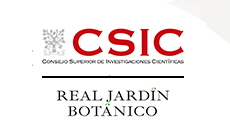Scientific Area
Transposable Element Activity as Genome Evolution Driver: The Nicotiana Suaveolentes section Case
ID: 613 / 339
Category: Abstract
Track: Pending
Proposed Symposium Title: Transposable Element Activity as Genome Evolution Driver: The Nicotiana Suaveolentes section Case
Authors:
Agustín Amata1, Sabela Quirós1, Nicolas Sierro2, Nikolai V. Ivanov2, Aureliano Bombarely1
Affiliations: 1 Instituto de Biologia Molecular y Celular de Plantas (IBMCP) (CSIC-UPV), Valencia, 46011, Spain. 2 PMI R&D, Philip Morris Products S.A., Quai Jeanrenaud 5, CH-2000 Neuchâtel, Switzerland
Abstract:
Nicotiana is an herbaceous plant genus of the Solanaceae family with 90 naturally occurring species divided into 13 sections. Five sections contain allopolyploids formed by interspecific hybridization between diploids. The largest section is Suaveolentes which includes 38 species, such as the well-studied Nicotiana benthamiana. The origin of this paleopolyploid clade is dated 6 MYA. Our previous work showed that Suaveolentes derives from the hybridization of the Alatae/Sylvestres and Noctiflorae/Petunioides ancestors. The polyploid genomes evolve to a diploid state in which repetitive elements are purged and some duplicated genes lose their function becoming pseudogenes or get removed by non-homologous recombination between the subgenomes. The transposable element analysis has revealed an explosion of LTR/Copia elements at the time of the diversification of the clade, shaping the gene space of the most recent Suaveolentes species.




